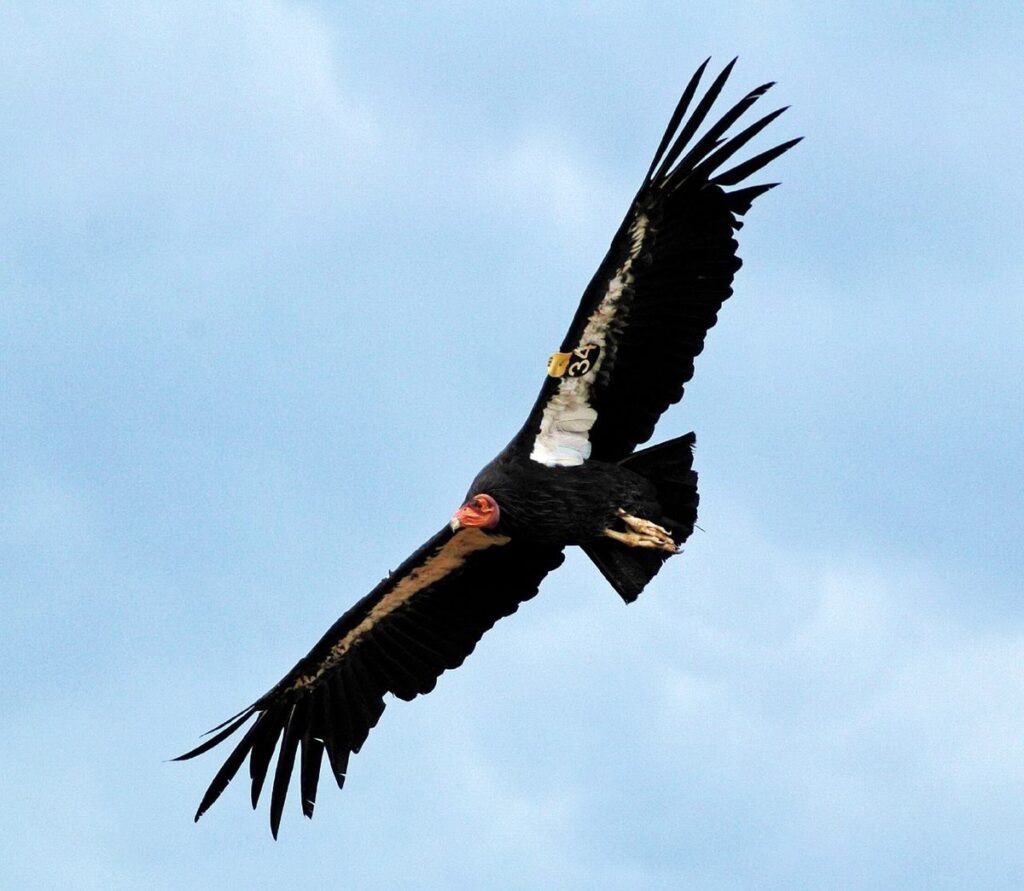Parthenogenesis means birth without fertilization. In other words, a female gives birth to offspring without having been impregnated by a male. This phenomenon occurs normally in some plants and a number of invertebrates like nematodes, some scorpions and mites, aphids, some bees, and parasitic wasps. It also happens among all vertebrates except mammals – yes, even birds. Parthenogenesis has been confirmed in hammerhead and blacktip sharks, some geckos, Komodo Dragons, and some species of boas, garter snakes, and rattlesnakes, among others. In birds most examples are from domestic turkeys and pigeons, but also Zebra Finches and Rock Pigeons. In these cases the eggs failed to develop normally and did not hatch.

The California Condor was placed on the federal endangered species list in 1967. The U.S. Fish and Wildlife Service began a captive breeding program in 1983, teaming with the Los Angeles Zoo and the San Diego Wild Animal Park. But in the wild, condor numbers continued to decline until by 1985 only nine wild birds remained. All remaining condors were brought into captivity, and the last wild bird was captured on April 19, 1987.
Condors aren’t sexually active until about the age of six and when a pair does so, only one egg will be produced every year or so. So captive breeding techniques were developed in which eggs are removed as they are laid, usually causing the captive condors to lay a second and sometimes a third egg. The extra eggs are incubated artificially and the chicks raised using a hand puppet shaped like a condor head, although some condor chicks are raised by their parents. Today, there are more than 127 condors in the wild in California, Utah, and Arizona.
In the process of captive breeding condors, there were two instances of condors laying unfertilized eggs. As reported in The Scientist, two of the California condor females produced young without a male partner, one in 2001 and one in 2009. Discovered after DNA analyses, the offspring had, instead of one set of genes from a father and one from a mother, two sets of the mothers’ genes. Both of the offspring were relatively small and died at early ages of 1.9 years and 7.9 years.
At least 700 species of animals exhibit parthenogenesis, so it must be useful in some circumstances. This mode of reproduction normally produces only female offspring (except in snakes, where only males are produced). This is a definite advantage to the species as female offspring are able to contribute directly to the population of a species without searching for a male. If the goal of evolution is to create as many offspring as possible in the shortest time, parthenogenesis is the way to go. The offspring have genes that come from one individual, conferring genetic stability and in an unchanging environment that is advantageous. Conversely, a dynamic environment requires that populations adapt, sometimes quickly, and parthenogenesis is then disadvantageous.
Partheogenesis has only been observed in captive birds. It may happen in the wild but is probably a rare phenomenon. Like the appendix, it’s a leftover from early evolution.
Parthenogenesis is a fascinating phenomenon! I recently visited a California Condor conservation facility in Oregon. It was a privilege to observe the personality traits, breeding program, and behavior of these magnificent birds. The facility goes to great lengths to prevent the condors from habituating to human contact, voice, or noise. Food for the condors is provided by local farmers. Adults are released into the wild as soon as the researchers determine that the birds are ready.
Parthenogenesis was discussed during the lecture and further research is being conducted. Education is hope for these amazing birds.
Thank you for your very interesting articles and I look forward to reading each one!.